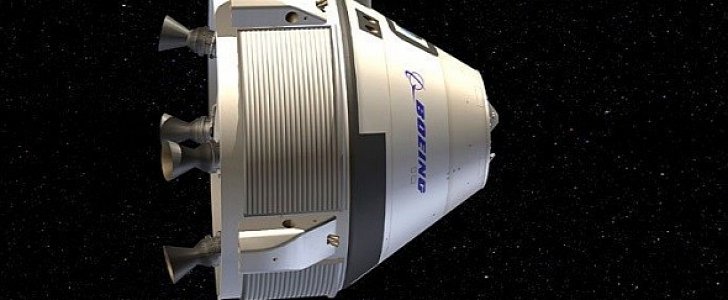Friday, December 20, 2019 was supposed to be a big day for the American dream of having astronauts take off from U.S. soil for the first time in about a decade: the second privately-developed spacecraft, the Boeing Starliner, was supposed to launch and dock with the International Space Station.
Partially, the mission succeeded. The capsule took off on top of an Atlas V rocket from Space Launch Complex 41 at the Cape Canaveral Air Force Station in Florida, and because the rocket performed as expected, the launch is considered a success.
But once the capsule detached from the rocket, something went wrong. It was not a catastrophic failure, but according to NASA administrator Jim Bridenstine, something went wrong with the spacecraft and prevented it from reaching the correct position for a link-up with the space station.
“Starliner in stable orbit. The burn needed for a rendezvous with the ISS did not happen. Working the issue,” the official tweeted.
Bridenstine is talking about a 40-second orbital insertion burn of the ship’s engines that would have put it on the correct path. That didn’t happen because of an error that caused the spaceship to believe it was in an orbital insertion burn, when it was not.
On its part, Boeing is saying its “flight controllers have just completed an adjustment burn and are assessing next steps.“
It’s unclear at this point whether the mission will succeed or fail. The Starliner is supposed to reach the ISS, dock and, after spending some time there, come back to Earth while surviving the ordeals of re-entry and landing,
The capsule is supposed to be slowed down by parachutes, but also by a never-before-used airbag system that would make it the first-ever crew-capable spacecraft with the ability of landing on solid ground.
UPDATE (2:49 GMT): Starliner will return to Earth on Sunday at the latest without hooking-up with the International Space Station
You can watch the events unfold on the NASA TV live stream attached below.
But once the capsule detached from the rocket, something went wrong. It was not a catastrophic failure, but according to NASA administrator Jim Bridenstine, something went wrong with the spacecraft and prevented it from reaching the correct position for a link-up with the space station.
“Starliner in stable orbit. The burn needed for a rendezvous with the ISS did not happen. Working the issue,” the official tweeted.
Bridenstine is talking about a 40-second orbital insertion burn of the ship’s engines that would have put it on the correct path. That didn’t happen because of an error that caused the spaceship to believe it was in an orbital insertion burn, when it was not.
On its part, Boeing is saying its “flight controllers have just completed an adjustment burn and are assessing next steps.“
It’s unclear at this point whether the mission will succeed or fail. The Starliner is supposed to reach the ISS, dock and, after spending some time there, come back to Earth while surviving the ordeals of re-entry and landing,
The capsule is supposed to be slowed down by parachutes, but also by a never-before-used airbag system that would make it the first-ever crew-capable spacecraft with the ability of landing on solid ground.
UPDATE (2:49 GMT): Starliner will return to Earth on Sunday at the latest without hooking-up with the International Space Station
You can watch the events unfold on the NASA TV live stream attached below.
Because #Starliner believed it was in an orbital insertion burn (or that the burn was complete), the dead bands were reduced and the spacecraft burned more fuel than anticipated to maintain precise control. This precluded @Space_Station rendezvous.
— Jim Bridenstine (@JimBridenstine) December 20, 2019


